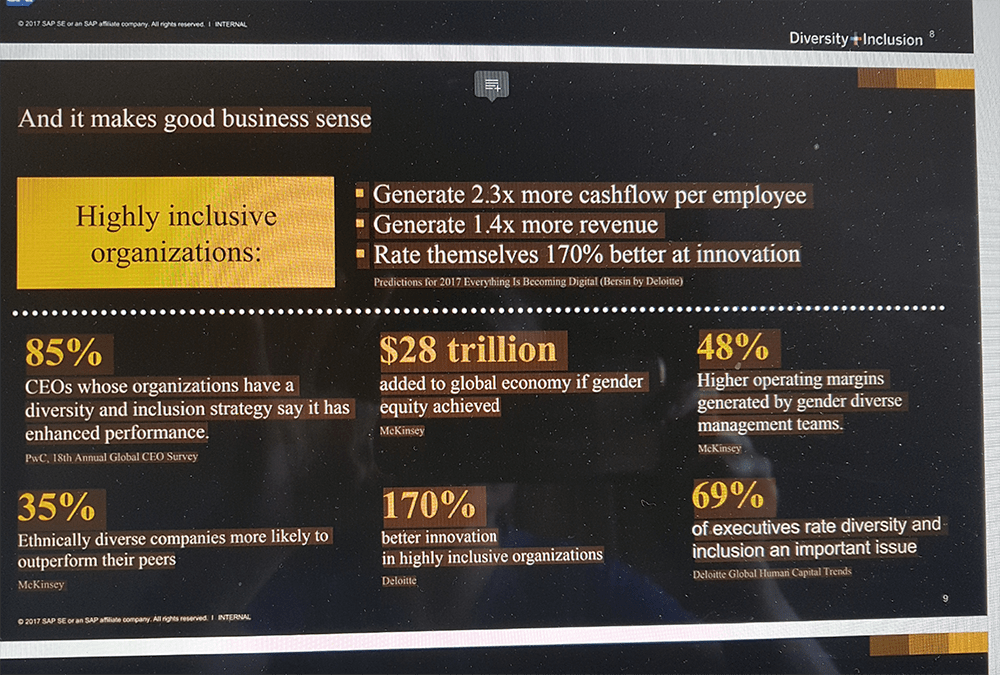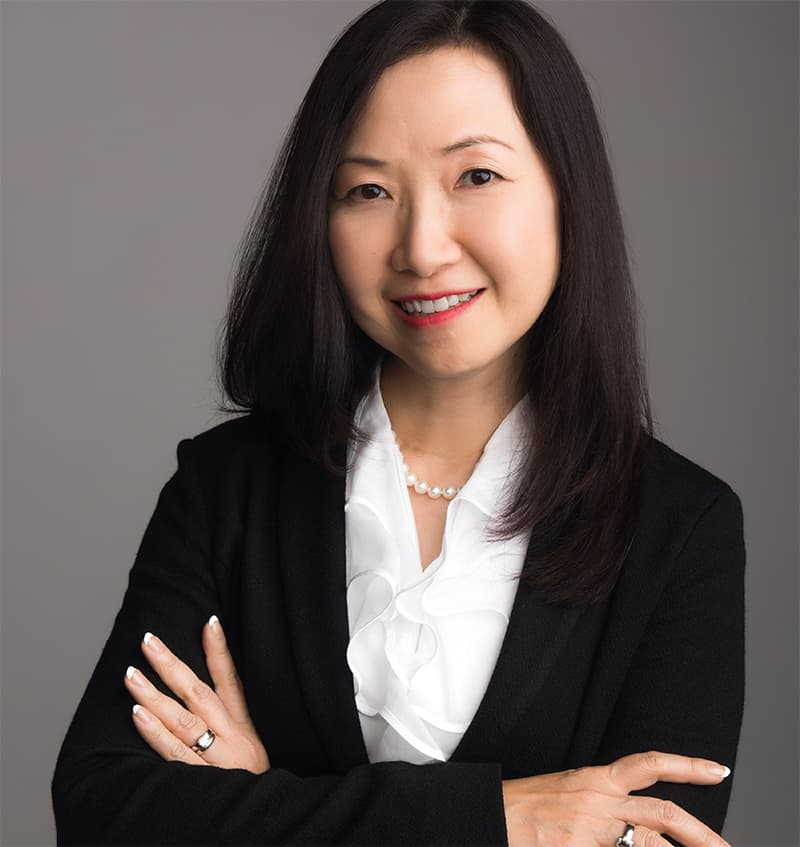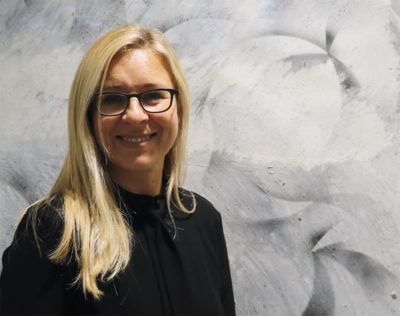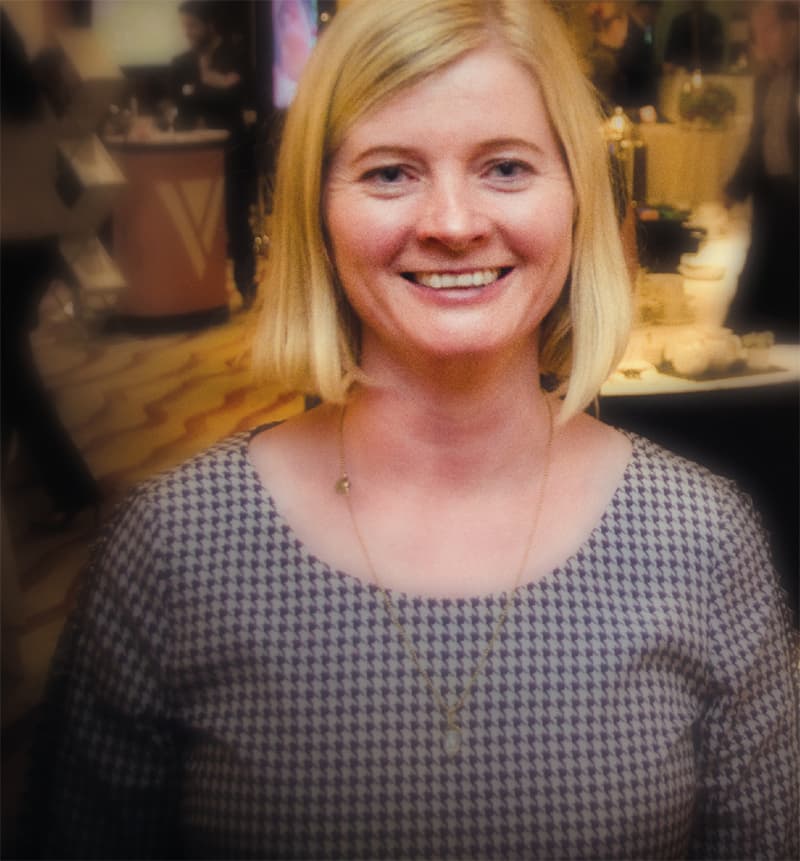The diversity advantage
13th March 2018 | Deirdre Coleman
Diversity at SAP
- 87% of SAP employees embrace workplace diversity
- 120 SAP colleagues employed via the Autism at Work programme
- 5 generations of workers creating a new dynamic
- 32.9% women in the workforce
- 150+ nationalities of SAP employees
- +88,500 employees in 150+ countries
- 25% women in management
- 378,000 SAP customers in more than 180 countries
Source: SAMP
Despite evidence that diversifying leadership teams can increase both innovation and revenue, many organisations are struggling to make it a reality – and few appear to be making visible progress. What are leaders in this space doing differently and what are the critical interventions that work to drive tangible impacts? We report on the D&I findings from Consalia’s 12th annual Global Sales Transformation conference in Singapore.
According to sociologist Cedric Herring, diversity in a business is one of the most important factors for predicting sales revenue. By analysing data on more than 500 US-based, for-profit businesses, Herring also found that:
- Companies reporting the highest levels of diversity brought in nearly 10–15 times more sales revenue on average than those with the lowest levels of diversity.
- Businesses with high diversity are more likely to report higher-than-average percentages of market share.
- Higher levels of diversity are associated with having more customers.
“It is likely that diversity produces positive outcomes over homogeneity because growth and innovation depend on people from various backgrounds working together and capitalising on their differences,” Herring writes.1
Business case for D&I
Herring isn’t the only who’s studied this impact. Speaking at Consalia’s Global Sales Transformation Conference entitled “Celebrating Diversity & Inclusion in Sales”, Lee Baldwin said: “There is a lot of opportunity and gains from D&I and there is a whole lot of upside if we grasp the opportunity.” Baldwin, who leads the APAC Professional Services business for CEB-Gartner, added: “Our research centres primarily on gender diversity but we’re currently doing a study that focuses on ethnicity in the workforce.”
Sales roles at all levels in the organisation are incredibly difficult to fill. The current selling environment necessitates more advanced sales skills, but finding sellers and sales leaders with these skills continues to be difficult. CEB Sales member organisations cite sourcing high-performing sales talent as their primary challenge: 35% of sales managers couldn’t find qualified candidates for open positions, up from 24% in 2010. The root cause of this is not tapping into half the workforce. Currently, women make up more than half of all college graduates in the United States but, despite achieving equal or even higher quota attainment in some cases, women are underrepresented at all levels of the sales organisation. Women also bring critical leadership skills to their organisations, as substantiated by research that says women are more effective across the board according to their peers, direct reports, and managers. Another aspect companies are missing out on is the stabilising effect of women on the workforce and their role in promoting diversity.
- Women typically stay in their roles for one year longer than men, leading to lower attrition costs.
- Women build more diverse teams: on average, female-led teams are 50% female/50% male, while male-led teams are typically only 25% female.
Baldwin delivered findings on the financial impact of a gender-diverse sales force, citing Herring’s research. “The mean revenues of organisations with low levels of gender diversity are roughly $45.2 million, compared with $299.4 million for those with medium levels and $644.3 million for those with high levels of diversity.” On average, despite having equal or even higher quota attainment, women are paid less across both base pay and variable compensation.” When we think about it, it comes down to the bottom line and money – what are we doing to further the bottom line of the organisations we work in through pursing these initiatives. If we’re not tying this into the business results that your senior leaders are going to be looking for then it’s not going to work.”
Baldwin outlined the approach that CEB-Gartner took to address diversity and inclusion within its own organisation. “You need to acknowledge that it will take effort to fix and you have to take specific action. When we were launching the Women at CEB global group a couple of years ago we started with focus groups – what people were annoyed at and what were easy fixes that we could implement immediately. It’s vital to have executive-level support and look at everything from recruiting and hiring to developing and retaining talent. How are we talking about parental leave and how big an obstacle is it? Look at your hiring panels – that speaks volumes to incomers. We just hired a fantastic saleswoman who chose us over a competitor. Why? Because half the team that interviewed her were female and that made her feel that it would be an inclusive environment.
Baldwin advised the audience to look for female talent in less obvious places. “Look at websites that cater specifically for women. We found the Elevate Network and the website www.fairygodboss.com were great sources of talent for us.” Citing a survey from Sally Krawcheck’s book Own It,2 Baldwin asserted that women place more value on ongoing learning and development. “If you’re not investing in learning and development programmes or have good sales coaches you might be inadvertently putting off female employees who may go look for those opportunities elsewhere.” A key retention tool is flexibility. “Make flexibility the default, not the exception. It’s much easier to drive flexibility in sales and it substantially increases attraction and retention.”
Qualifications build credibility
Simon Dale, Vice President, Sales, Asia Pacific & Japan MapR Technologies and Board Member of the Association of Professional Sales discussed the importance of becoming a certified sales professional in order to build credibility. “To be able to reach a level of certification and demonstrate that that has been verified by an independent body helps to mitigate against some of that bias that may creep in surrounding people’s ability and qualifications. If you have a sales certification, it demonstrates that you want to develop yourself making you more attractive to employers.” The APS has recently undertaken some research on diversity and inclusion in association with Ernst & Young: see the white paper, Performance Leadership: How diverse and inclusive sales teams are seizing competitive advantage.3
SAP’s journey to move business beyond bias
Michelle Charles is Global D&I Head at SAP and responsible for driving SAP’s diversity agenda across the sales line of business globally. Her focus is to model diversity as a business imperative by building and growing diverse talent to better understand the customers, innovate creatively and improve competitive advantage. As a strong supporter of women’s career growth in the workplace, Michelle is a core member of the SAP Business Women’s Network in Singapore, where she and the team have been instrumental in driving SAP’s gender intelligence agenda with initiatives focused on empowerment, enablement, networking, policy changes, and CSR.

Figure 1: The business case for diversity: Michelle Charles, SAP.
Outlining SAP’s progress, Charles says they have set themselves ambitious targets and are continually mapping their advancement. “In the words of Peter Drucker, what gets measured gets achieved ,and gender was the first area where we set up a KPI. In 2012, we set a goal of 25% women in management across the globe, which we achieved ahead of time in June 2017. The executive board have approved new diversity targets (based on 1% projected annual increase). These targets are 28% women in leadership by 2020, rising to 30% by 2022.
“For us the business imperative is clear: having a high percentage of female managers is positively correlated with disruptive innovation. If you do not intentionally include, you will unintentionally exclude. We introduced a Leadership Excellence Acceleration Program (LEAP) to help female talent rise to leadership positions – they have to be in a leadership role in order to drive change. We now have two women who have been appointed to executive board level. We were the first global IT company to achieve globalEdge certification, which looks at your HR practices and processes and ensures there’s no discrimination.”
For SAP, the business case centres on employee engagement, innovation and customer orientation. A bias-free workplace motivates, attracts and helps retain employees. Diversity of thought helps organisations to think differently; diverse teams are proven to be more innovative. Globalisation means companies relate to increasingly more diverse customers (See Figure 1).
Voice of the diversity leader
Lee Chew Tan, Senior VP of Hybrid IT Global Sales, Hewlett Packard Enterprise
Female representation is notoriously poor in tech and the disparity grows as you move up the ladder – for instance, women accounted for only 11% of C-level executives in Silicon Valley in 2014.

Lee Chew Tan HPE’s Senior Vice President of Hybrid IT Global Sales
Tan’s advice is to be very strategic in your career and be bold enough to embrace a big vision of the possible. This, she says, will require courage to face challenges, take risks and put yourself forward for those stretch projects. “Robert Anthony defines courage as the willingness to be afraid and act anyway. You need to have the courage to be included and to want it. It’s also important to have the discipline to take charge and make that vision a reality, and what makes a difference for that process is you need people on your team with the same passion; you need to have tenacity and you need to have a positive mind-set”.
Sheryl Sandberg’s book, Lean In proved influential for Tan. “I realised when I was offered a big career opportunity that my thought process as a female was completely different to how a male colleague would have processed that opportunity. Women hesitate to take stretch assignments, as they’re more concerned that they won’t measure up. We can often overthink these chances and we don’t always give ourselves that runway to take on new challenges”.
She cited the quote from Lean In: “Women only apply for open jobs if they think they can meet 100% of the criteria listed – for men it’s 60%.”
Tan declares that you need courage to be included and you need to want to be included. It comes down to having self-confidence. Society does not view ambition as a trait in women as positively as in men.
“I wanted my team to be known for growth, for efficiency: we set a two-year plan and we had a collaborative leadership structure – we delivered double-digit growth. It was a scary journey and a scary commitment – but I placed a stake in the ground and to be successful you have to lay claim.”
“We have done some research internally at SAP: if you increase employee engagement by as much as 1%, you improve your profit margin by €35 million to €45 million, so the business case is a no brainer. It’s important to equate your D&I strategy to the overall mission of the organisation – ours is to help the world run better and improve people’s lives. It has to make business sense in order to have credibility; it has to be owned by the business and supported but not owned by HR. In the words of our CEO Bill McDermott, “SAP wants to be the most open-minded and inclusive software company on the planet.”
Make flexibility the default, not the exception. It’s much easier to drive flexibility in sales and it substantially increases attraction and retention.
Diversity goes beyond gender equality. “We look at our D&I approach across four pillars: Gender Intelligence, Cross-Generational Intelligence, Culture & Identity and Differently Abled People. There are currently five different generations working at SAP. We introduced a cross-mentoring programme called Building Bridges in 2017 and we also have flex work. It’s about having the right environment to ensure collaboration and engagement happens between these generations.”
AP has a number of employee network and affinity groups such as the Business Women’s Network, Black Employee Network, Pride@SAP and Cultures@SAP to bring people together so they can share and collaborate. Affinity groups contribute to business success through several means: recruitment and retention, product development, creating a positive and supportive work environment, and helping to deliver the commitment to diversity and inclusion to name a few.
SAP’s Autism at Work programme is helping adults on the autism spectrum flourish in IT roles, bringing an untapped talent pool into the workplace and fuelling further innovation. The programme has been such a success SAP is currently working to expand it, with the goal of having 1 percent of its total workforce – approximately 650 people – fall on the spectrum by 2020.
- Women typically stay in their roles for one year longer than men, leading to lower attrition costs.
- Women build more diverse teams: on average, female-led teams are 50% female/50% male, while male-led teams are typically only 25% female.
“We have more than 120 individuals on the autistic spectrum in 22 different roles all over the globe. We’re tapping into an underutilised source of talent, as 85% of adults with autism are unemployed. They prove a great match for technology and development-type roles. Over a billion people, about 15% of the world’s population have some form of disability. We have to think differently about how we define talent and source talent,” says Charles.
SAP partners with Danish firm Specialisterne, which hires high-functioning autistic adults and prepares them for IT careers, as well as Adult Resource Centers in Pennsylvania and with the Department of Rehabilitation in California, to provide training in social and collaboration skills as well as life skills – how to rent an apartment, how to access and use public transportation, opening a bank account and filling out human resource forms, and so on. These kinds of interactions and “mundane” details of everyday life that neurologically typical or neurotypical adults take for granted can be extremely difficult for those on the spectrum.
What you can do
- View D&I as strategic planning
- Set numerical targets to measure success
- Flexibility is key
- Diversity from the top down
Source: SAP

Samantha Wessels
What’s really making autism register more with employers now is the huge demand for talent, particularly in areas such as IT, where many high-performing individuals on the spectrum excel. The impact of these initiatives can have a significant impact, not just on the lives of the people they hire, but on the overall cohesion of the teams. Companies stand to gain by gaining employees who are extremely hard-working, loyal, focused and dedicated advocates for the organisation.
Inclusion Starts with I
Uma Balasingam, co-founder of Lean In Singapore which has over 700 members, and the founder of Lean In Women in Technology Asia & Women In Technology Singapore Chapter spoke about the important role that Lean-In Circles provide to women. “Lean In is a global non-profit organisation dedicated to progressing women in the workplace, founded by Sheryl Sandberg. The concept of Lean-In Circles is that 8–12 women meet regularly, peer-peer and hold each other accountable against the goals that they set for themselves to challenge and celebrate each other.”
The combination of networking, motivation, education and support is impactful, encouraging women to embrace challenge and take risks in the workplace. Balasingam spoke on a panel about unconscious bias – ingrained beliefs – including doubts about our abilities that lead us to miss opportunities and so stop us from reaching the top. To begin a real process of change, women also need to look at their own unconscious bias and move away from these potentially damaging beliefs. Assumptions are internal; they come from within us and before any external change can be made in a company’s culture, they need to be understood.

Deirdre Coleman
Most people would not consciously decide to hire candidates based on whether they remind them of themselves. But one unconscious bias – affinity bias – may lead people to favour candidates who are like themselves, research shows (especially in sales – Ed). Affinity or similarity bias is where people seek out those who share their backgrounds, group membership, or experiences. If hiring managers and boards of directors are made up of mostly men who unconsciously engage in such bias, it stands to reason that more men than women will continue to be hired and promoted – particularly men who share the same background with current managers. This only serves to perpetuate the cycle of men outnumbering women in leadership positions. Gender targets, de-identifying CVs and structured interviews are but a few of the strategies that can help eliminate such bias in recruiting employees.4
Research conducted by Jaluch this year5 revealed the extent to which societies are unconsciously biased: for example, 67% of the British public admits to feeling uncomfortable talking to a disabled person; gay and lesbian job seekers are 5% less likely to get an interview; and 80% of employers admit to making decisions based on regional accents. Unconscious bias doesn’t just negatively affect women – it can have a detrimental impact on any minority group.6
Balasingam spoke about the importance of building awareness of what women do to hold themselves back, what men can do to educate themselves and better support women, and what organisations can do to tackle
We need to be mindful of our own unconscious bias. We all tend to like like-minded people.
unconscious bias. Lean-In Circles are a vital part of that support mechanism for women. Since the organization’s launch in March 2013 the LeanIn.Org community has grown to over 800,000 women and men and more than 28,000 Lean-In Circles in over 140 countries.
“Our Lean In Singapore community is made up of more than 1,000 women who come together to be inspired, educated and to support and collaborate. These women are mostly in full time employment (93%) and represent a broad age and nationality range. Past events and collaborations have been with companies such as Uber, Dimension Data, INSEAD, Cisco, NTUC, Lazada and Edelman and have covered topics on personal branding, unconscious bias and women in the work place.”
Inclusion often overlooked
For Samantha Wessels, SVP Group Sales Operations & Enablement, Dimension Data inclusion is often overlooked, leading to people leaving organisations as they don’t feel that they fit in.

Simon Dale
“We need to be mindful of our own unconscious bias. We all tend to like like-minded people. How do you get everyone contributing, not just the loudest voice in the room? We have to make people feel psychologically safe and that they belong in the room.”
Creative abrasion is a phrase coined by Jerry Hirshberg, founder and president of Nissan Design International. It describes a culture where ideas are productively challenged. Creating an environment of diversity where opposing approaches grate up against each other is hugely successful in fostering innovation. It forces people to truly evaluate their approach and decision-making. Bringing more women into tech is vital.
“To be equal, you have to act equal and think equal. We don’t have enough women in tech. Women need to back themselves and believe in their abilities and find themselves a mentor and a sponsor. Know what you want and don’t be afraid, “ she concludes.
Read more about Samantha Wessels as a global sales leader in her “My Journey” profile.
1 Bob Marsh, “How Diversity Affects Sales Performance”, LevelEleven, 18 November 2015, https://leveleleven.com/2015/11/how-diversity-affects-sales-performance/.
2 Sallie Krawcheck, Own It: The Power of Women at Work, Crown Business, 2017.
3 Performance Leadership: How diverse and inclusive sales teams are seizing competitive advantage, APS-EY, http://associationofprofessionalsales.com/wp-content/uploads/APS-DI-Whitepaper-FINAL.pdf.
4 Melissa A Wheeler and Victor Sojo, “Unconscious bias is keeping women out of senior roles, but we can get around it”, The Conversation, 7 March 2017, https://theconversation.com/unconscious-bias-is-keeping-women-out-of-senior-roles-but-we-can-get-around-it-73518.
5 Unconscious Bias Infographic, Jaluch, http://www.jaluch.co.uk/unconscious-bias-infographic/.
6 Kelly Long, “How to recognise and overcome your unconscious bias”, Guardian, 14 December 2015, https://www.theguardian.com/women-in-leadership/2015/dec/14/recognise-overcome-unconscious-bias.



